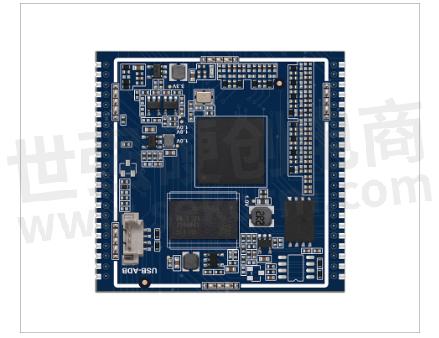Introduction to Technical Parameters of USB Noise Reduction Microphone

Analysis of microphone noise reduction manufacturers With the rapid development of science and technology, USB noise reduction microphones appear in our daily life and are loved by many users. This is because USB noise reduction microphones are compared with traditional microphones. The noise generated during the process is low, and it will not affect the fluency of people during the meeting. So have you heard about the USB noise-cancelling microphone and its technical parameters?This article POROSVOC will introduce what is an OTP chip?

The microphone noise reduction manufacturer analyzes the USB noise reduction microphone. Its sensitivity refers to the USB noise reduction microphone. Its open circuit voltage and the ratio of the boost acting on the diaphragm are actually higher than the actual, and the microphone will inevitably cause scattering in production. , so when it comes to sensitivity, there are often two different definitions. One refers to the sound pressure that the noise reduction microphone acts on the diaphragm, which is called the sound pressure sensitivity. And the other is when the USB noise-cancelling microphone is not put into the sound field, the production voltage refers to the sound field sensitivity. Among them, the production sensitivity is also called diffuse field sensitivity and free field sensitivity. Usually the USB noise reduction microphone used for recording gives the sound pressure sensitivity, while the application type of the USB noise reduction microphone used for measurement gives the sound field sensitivity or the sound pressure sensitivity.
The frequency response of the microphone noise reduction refers to the frequency response curve of the USB noise reduction microphone in the process of receiving sounds of different frequencies. It is a horizontal line, which proves that the USB noise reduction microphone is very stable during use, which means that the output signal can truly present the characteristics of its original sound. However, this horizontal line is not easy to achieve. Generally speaking, its frequency The response curve will be flatter than the moving coil type.
Noise-cancelling microphones have a small dynamic range, which will cause sound distortion and deterioration of sound quality, so a sufficiently large dynamic range is required. The output voltage generated by the sound pressure of the sound wave acting on the microphone is equal to the output voltage generated by the inherent noise of the microphone itself, and the sound pressure of the sound wave is equal to the equivalent noise level of the microphone. Harmonic distortion refers to the more harmonic components of the output signal than the input signal. Harmonic distortion is caused by the fact that the system is not perfectly linear. The sum of all additional harmonic levels is called total harmonic distortion. Generally speaking, the total harmonic distortion of USB noise-cancelling microphones at the frequency of 500Hz is relatively small, so many products use the distortion at this frequency as its indicator. The total harmonic distortion is less than 1%, and the ear cannot distinguish it. If it exceeds 10%, the distortion component can be clearly heard.
- +1 Like
- Add to Favorites
Recommend
- Microphone Noise Cancelling: How Do Noise-cancelling Microphones Work?
- How to Set Up a USB Noise Cancelling Microphone
- Tips for How to Design The Duplex Hands-free Calling Products of The Microphone
- Hosiden Released a A2B MEMS Microphone Unit Realizing Flat Frequency Characteristics up to a Low Range of 20Hz
- How Does the Microphone Noise Reduction Microphone Work?
- Konos Microphone Adopts ONPOW‘s Push Button Switch, Bringing Excellent Durability and the Ability to Cope with Complex Environments to the Product
- TDK Announces Ultra-high AOP Analog MEMS Microphone ICS-40638 Enabling Clear Audio Capture in Loud and Noisy Conditions
- TDK‘s Newest MEMS Microphone T5828 with SoundWire™ Functionality Offers 68dBA SNR and Acoustic Activity Detect
This document is provided by Sekorm Platform for VIP exclusive service. The copyright is owned by Sekorm. Without authorization, any medias, websites or individual are not allowed to reprint. When authorizing the reprint, the link of www.sekorm.com must be indicated.





























































































































































































































































































































































































































































































































































































































































































































































































































































































